Review: Samsung Intensity II
Oct 3, 2010, 9:39 PM by Philip Berne
The Samsung Intensity II is a simple messaging phone with a familiar design on Verizon Wireless. Will this satisfy more than your messaging needs?
Form
Is It Your Type
Is It Your Type?

The Samsung Intensity II is a compact messaging phone that combines a number pad up front with a full QWERTY hidden beneath. With social networking taking off, can this form factor provide a simpler alternative to all the smartphones on the market?
Body
The design of the Samsung Intensity II should be plenty familiar by now. Since the LG Rumor on Sprint, Samsung and LG have been jockeying for position with phones that have a candy bar look with a number pad up front and a hidden QWERTY keyboard that slides out from beneath. In that respect, the Intensity II adds nothing new to the formula. In fact, the LG Cosmos, also on Verizon Wireless, is a nearly identical device, down to the button placement and swooping curve of the front number pad. It's easy to see the appeal of this form factor. The phone is a bit thick, but otherwise it's nice and compact. It comes swathed mostly in plastic, but it feels solid and well designed, with textures and ridges in all the right places to make holding and using the phone easier.
Up front you get the screen up top and a 12-key number pad beneath, with a big 4-way button in between. There are two soft keys beneath the screen, and the same keys show up on the left side, so that when you open the phone the soft button features will work in landscape mode. There are Send and End keys, as well as a 'C' key ("Clear"), and a dedicated speakerphone button.
On the right side of the phone, you'll find a dedicated voice dialing button, always a nice addition. There's also a camera button and a microSD card slot hidden beneath a port cover. On the left side sits the large volume rocker, which is very easy to use while holding the phone during calls. Samsung also uses a microUSB port on the left, which is a nice change from the proprietary ports of past Samsung messaging phones. On top, another port cover hides a 2.5mm headphone jack. This is a design misstep for a phone with a memory card slot for music. Nobody uses 2.5mm headsets any more, and Verizon Wireless doesn't include a set in the box. I'd rather see a standard 3.5mm port.
The slide mechanism feels solid, and sliding open the phone reveals the 4-row QWERTY keyboard. The top row is dedicated to numbers, which seems odd because there's a full number pad on this phone. I'd rather hide the numbers as Fn key modifiers and devote more space to punctuation and shortcuts. The only punctuation mark to get its own key is the period. There's also a set of arrow keys in a cross layout with an OK button in the center. Again, that feels unnecessary since I didn't have to stretch my thumb to hit the 4-way button on the top half of the slide.
The keyboard felt a bit small for extended typing sessions. The keys are well-shaped; each key is domed with a plastic key separating each letter. I was able to type with no trouble, but not quickly.
The Three S's
Screen
The screen on the Samsung Intensity II is colorful, but it has some of the flaws of cheap LCD displays. The viewing angle on the screen is so narrow that some colors, especially darker hues, looked slightly different in my right and left eyes. This created an unpleasant shimmering effect. The display was also not very bright. At full brightness, some whites on screen looked grey, and though colors looked nicely saturated, they didn't pop like I'd want. Outside, the screen lost much of its brightness. It was very difficult taking photographs outdoors on a bright, sunny day. If the screen was not directly in front of me, I could barely see my subject, which made it difficult to take a picture at an angle, sometimes necessary to get the shot you want.
Sound
I was disappointed with the sound quality on the Intensity II during calls. On my end, callers sounded like they were being trampled by a heavily digital effect through the phone's earpiece. If my callers spoke quickly or mumbled, I could not understand what they were saying. On the other end, things did not sound as bad, but there was still a heavy digital quality to my voice as I listened back to messages I recorded. On both ends of the call, voices occasonally dropped out for a brief instant, and sometimes the phone seemed to clip the beginning of sentences, as if the mic was slow to react to my talking.
Ringtones, on the other hand, were loud and clear through the phone's speaker. The speakerphone sounded even better than the earpiece, and it was loud enough that I could carry on a conversation over the noise of a fast moving car. With the sound turned off, the vibration was good, but I'd prefer it be stronger to feel it in a stuffed pants pocket.
Signal
The Intensity II uses Verizon Wireless' older 1xRTT network. Reception on the phone was questionable. The phone usually reported only a bar or two of service in my area, and this also affected calls. Some calls did not go through, giving me a network error message when I tried to connect. Incoming calls were less of a problem, and only a couple calls didn't find the Intensity II during my test run. Data on the device was very slow, but always reliable. Even when the phone reported low reception, I never had trouble connecting to the data network and chugging through long Web page downloads.
Battery
Battery life on the Intensity II is very good. After a couple days testing, I still had battery left and probably could have lasted through much of a third day. I did not use GPS much, but I did let the phone check my email and social networking feeds in the background, and this didn't cause much trouble. I would bring the charger on a weekend getaway, just in case, but you won't need to charge this phone during your work day to make sure you have juice for the commute home.
Basics
Menus
There is really not much to speak of in the menus on the Samsung Intensity II. The main standby screen displays the time and alert messages, but you can't add any widgets or change anything beyond the wallpaper. The main menu is a 3 x 3 icon grid. Samsung gussies it up a bit for the trio of themes on the device, but it's still quite simple, which is a good thing. You can swap out four of the nine icons on the grid for your own choices.
Digging a little deeper, you'll find an uninspired set of menus and settings displayed as textual lists. There are a few redundancies. I'm still not sure why Verizon buries the Mobile Web app under the Media Center menu, but you can plant your own Web shortcut on the main menu screen if you'd like to do less digging.
One thing that bugged me was how long it took to unlock the keyboard on this phone. The phone locks up quickly, and unlocking is a two-step key combo. But there seemed to be a delay that lasted seconds. It was always much quicker to simply open the phone then snap it shut, which also unlocks the screen.
Calls / Contacts
With the slide closed, making calls on the Samsung Intensity II is as easy as dialing the numbers. I found dialing to be more difficult than I expected. Those number keys are raised at an angle, but they are also very short, so it's tough to avoid the number above and below. Hitting the Send key takes you to the Call Log instead, where you can dial from the list of recent calls. There is also a dedicated Contacts choice on the standby screen for the right soft key.
Once you open the keyboard, typing a name from the standby screen will take you to the contact list. The contact search feature is not very smart, though. If you type "P-H-I" you get Philip, but if you type "L-I-P" you're swept to the "L" section of the list, so it's more of a shortcut than a proper search. If you start typing B-E-R, you don't jump to my last name. Instead the phone takes you to the "B" section, alphabetized by first names.
Once you've placed a call, there are no shortcuts on screen, but the speakerphone button is always available. There is a calling menu, from which you can send a message or take notes in the notepad app. You can also jump to the Bluetooth menu, but I'd prefer a one-step shortcut to send the call to the currently paired Bluetooth headset. You can make a conference call by dialing the second number directly during a call and hitting Send. Once you've connected, pressing Send again will join the calls. There's no way to manage your conference, you can't split the calls or end one call at a time.
The address book isn't bad for a feature phone. There are plenty of fields available. You get space for five phone numbers, two email addresses, two postal addresses (work and home), and some other info, like birthday and IM screen name. You can't customize these fields or add new slots, but I don't expect much more than this from a non-smartphone. I do wish Verizon Wireless (and all carriers) would let you synchronize this phone with popular online address books like Google or Yahoo, and Exchange support is always welcome, but I guess Facebook contact sync is asking too much. I set up the phone to use Gmail, and though I couldn't sync the address book, I was able to quickly create a new contact entry from the email app. Mobile Email only adds the name and email address, but that's a good start.
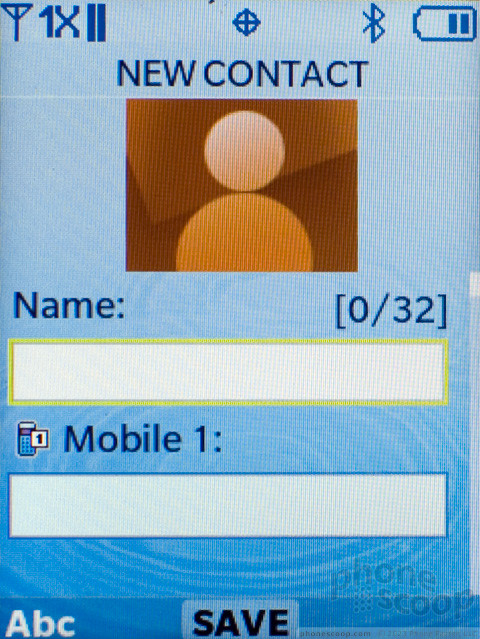
Messaging
The messaging features on the Samsung Intensity II are simple, but Samsung gets messaging right in some key ways. First of all, the phone uses the threaded, conversational style for text messaging that I prefer. Messages come through in speech balloons, so you can see both sides of the conversation in a long column. The email app is not especially attractive, but it is tenacious. The phone always alerted me to new messages, even when the app wasn't active. Sometimes, it alerted me multiple times when I had numerous new messages in my inbox. The font choice in the email app is atrocious, a very wiry font that's tough to read for a long stretch.
For instant messaging, the Intensity II uses the same app Verizon Wireless has been using for 20 years now (at least, it feels that way). There's support for AIM, Yahoo and Windows Live messaging, and though the app doesn't look good, it functions fairly well. There was an occasional delay on some of my messages, but most of the time chat was quick and painless. Still, I'd like to see Verizon update this app and perhaps add support for other messaging platforms. The phone does support Google Talk, but it's somewhat hidden. Instead of grouping Gtalk with the IM app, it's part of the Social Beat social networking app.
Social Beat lets you read status updates and news from Facebook, MySpace and Twitter. For some reason, it also supports Gmail and Google Talk. I found the email app handled Gmail better than Social Beat. Alerts from Social Beat could be confusing, since the app does not take you to new messages after you confirm a notification. You have to figure out what's new on your own. Otherwise, Social Beat is a simple way to read your daily feeds, but it doesn't offer the robust support I'd like from a dedicated app. On Facebook, you can post pictures and read updates on your Wall or new messages in your inbox, but there isn't much to do beyond that. On Twitter, you can't search or check trending topics, just read and reply to messages.
Extras
Music
Even though the music player on the Intensity II is simple, the experience could be confusing or frustrating at times. First, the phone had a hard time recognizing my song files. I had to place them in the specially marked My_Music folder, but even then the phone mistakenly read the invisible system files that the Mac OS appends as song files, leaving me with a library half-filled with unplayable junk listings. The library could be counterintuitive. When I clicked on an artist name, the phone started playing songs instead of showing me a list of tracks. It was my fault, I didn't notice the "View" option that had appeared above the left soft key, but this behavior just didn't feel natural.
Once a song is playing, the music player itself is bare and ugly. There are a few skins available, but they don't help much. There's an album artwork skin, but not all of my artwork appeared. There's an visualizer skin that presents a moving EQ, but the EQ bars couldn't keep up with the music, so it wasn't appealing. There's a mysterious "Lyrics" skin, but no lyrics appeared for me, even when I loaded a track that I knew had lyrics embedded in the file.
The phone uses a non-standard 2.5mm headphone jack, so I couldn't listen to tunes with my own earbuds. I tried listening through the speaker, but the speaker distorted at higher volumes. It sounded clear until I reached the upper limit, so for softer listening it will suffice. The phone also worked with my Bluetooth stereo speakers, so wireless playback is always an option.
Camera
Camera
To open the camera on the Samsung Intensity II, press the camera button. When that doesn't work, press it again. Then try holding it down for a while. Depending on the phone's mood, it might require a long or a short press. The camera could be very sluggish all around. It was slow to open, slow to shoot, slow to get back to the next shot after a quick review of the pic. It's a very basic, 1.3 megapixel camera with no auto focus and no video recording feature, so I wasn't expecting high performance.
There are a bunch of options on the Intensity II's camera, perhaps too many. White balance is nice, but if you're adjusting the metering mode on this camera, you're probably ready to upgrade. There is even a Night Vision mode, and you can see the results in my samples on the next page.
Image Gallery
The image gallery on the Intensity II offers a wealth of options. The standard view is a thumbnail grid, and you can click on a picture to view it fullscreen. From there, the phone offers a wide variety of editing options. You have the standard exposure options like brightness and saturation, and a selection of color filters ranging from the useful, like sepia tones and black & white, to the obscure, like Cinema-Normal and Cinema-Old. You can't crop images, but you can zoom and rotate, and even merge two pics together for a doubled exposure look. You can also add frames, clip art and text to your images. There are plenty of options to kill time messing with your photos, if you are so inclined.
Image Quality
Photos
Image quality from the 1.3 megapixel camera on the Samsung Intensity II was all over the map. Pictures taken indoors were fuzzy around the edges, blurry in the middle, and speckled with color noise in the darkest spots. Outdoors, colors were muted, at best. At worst, bright red flowers completely bled into their surroundings, rendering the entire photo somewhat orange. Other photos looked like they were shot through gauze. That Night Vision mode might be fun for a laugh, but it won't be very useful.
I'd say the Intensity II would be fine for quick picture messaging, especially if you're going to play around and add frames, text or other silliness to your image. But these aren't photos I would share on a social network, and I wouldn't leave my real camera at home.
Browse / Customize
Browse
The Samsung Intensity II uses a basic Access Netfront mobile Web browser. It's hardly capable of loading even the most basic pages, except in a full mobile view. Pages loaded very slowly. The 1x network never stopped chugging, but it was never quick, even on simple pages made up mostly of text. You cannot simply enter a URL into the browser. You have to go to a special WAP page where you can enter the site address, then load the site you want. Also, the browser uses a thin, blue selector box to tell you which choice you're about to make. I found the box very hard to see, especially on that URL entry page, so I was constantly clicking on an advertisement or some stupid Verizon Wireless link before I got where I wanted to go. Even worse, opening the keyboard causes Web pages to reload. They seem to switch perfectly from portrait to landscape, but the browser insists on reloading anyway.
Customize
For a feature phone, there are plenty of ways to customize the Intensity II to add convenient shortcuts. From the standby screen, the 4-way button gives you three shortcuts you can assign yourself to the up, down and left actions. When you press right on the d-pad, a separate shortcut menu opens, and you can add even more shortcuts to this menu. There are also three themes to choose from on the phone, and a variety of wallpapers. You can also customize some alert sounds and ringtones.
Extras
Bluetooth
Pairing the Intensity II with my Bluetooth gear was easy enough, but performance wasn't great. With stereo speakers, the phone worked just fine. But with a Bluetooth headset, I had some reception trouble. My headset cut in and out constantly, and unless I kept still, it was tough to have a long conversation. Sound quality was also a bit garbled through my Bluetooth earpiece.
Clock
The phone has a medium sized clock on the standby screen, and you can choose from a few sizes and styles. Even the largest size wasn't large enough, and I found the black color of the clock's font to be tough to read. The clock does not persist through the phone's menus and apps, so if you want to check the time, you'll have to stop what you're doing and exit to the home screen.
GPS
The Samsung Intensity II uses VZ Navigator for turn-by-turn navigation. In my tests, VZ Navigator worked very well, and the phone had no trouble finding me and tracking me on my trip in and out of the city. The app also offers some cool location based features like local gas prices and local event listings. A VZ Navigator subscription costs $10 extra per month, but if you'll use navigation a lot, it's definitely worth the price of admission.
Video Tour
Wrap-Up
After seeing so many versions of the same phone design, I'm disappointed that the Samsung Intensity II is as good as it gets. The design is diminutive, but uninspired. The number pad up front was very difficult to use, and the full QWERTY keyboard beneath could use quite a few improvements and shortcuts. The menus are as basic as you'll find on a phone, which is fine for a simple messaging device, but there is still plenty of room for improvement with better organization and a more useful, customizable standby screen.
There are a few things the phone gets right. If you just want to send and receive messages, the text messaging app on the phone works well, with threaded messaging and a nice look. Email wasn't pretty, but it worked well and it was very responsive to new incoming messages. Social Beat doesn't have many features, but it does a nice job keeping up with Facebook, Twitter and MySpace, and it also includes Google Talk, which is a nice bonus.
If you want a simple messager that doesn't require a data plan, the Samsung Intensity II is an okay choice, with a big caveat. The phone doesn't sound great during phone calls. Still, the battery lasts a long time, and with good text messaging and a small form factor, this phone might have some appeal for a younger audience.
Comments
LG Cosmos vs. Samsung Intensity II
I am a basic phone and texting user looking for good calling qualities (connection, voice, etc,, )good battery life, 1000 contacts (with multiple #'s, ect.)along with apps for alarms, calendering, stop watch, to do list, and note pad.
Considering these features can you offer a review of the LG Cosmos and a comparison of these 2 feature phones?
Thanks in advance for your assitance.


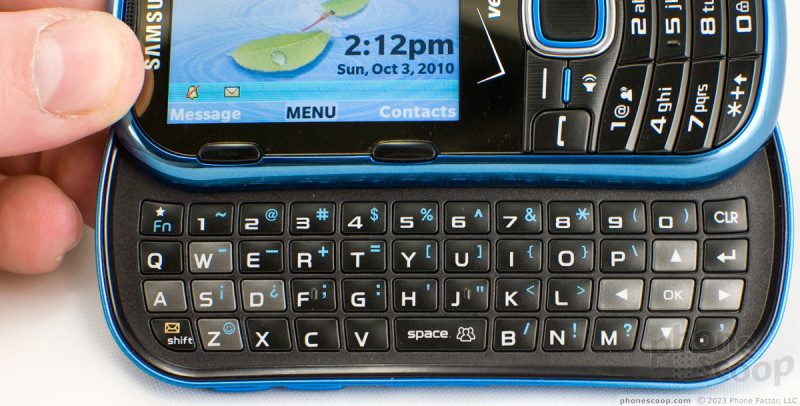







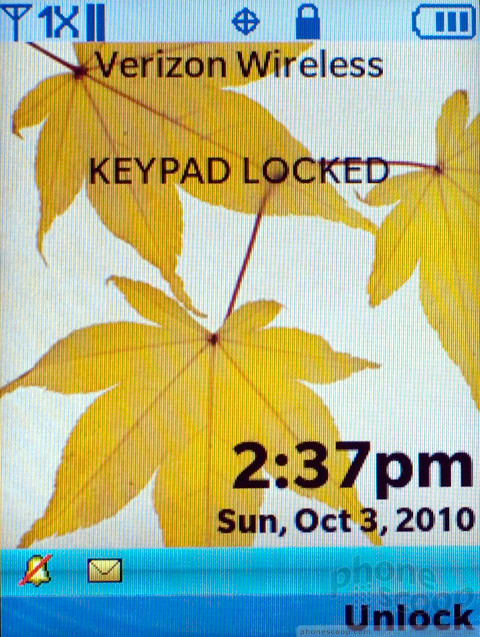






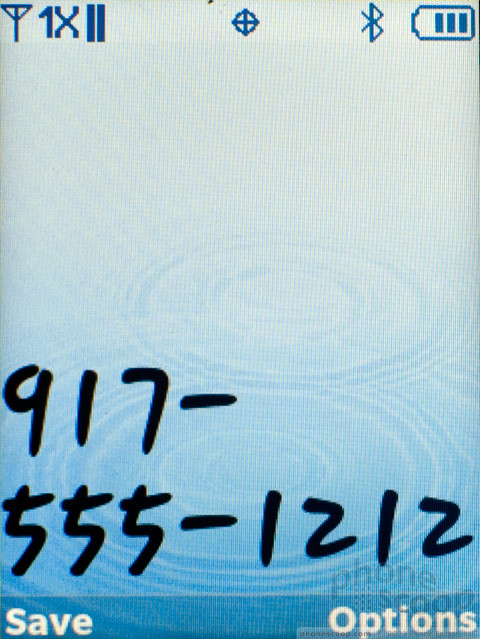




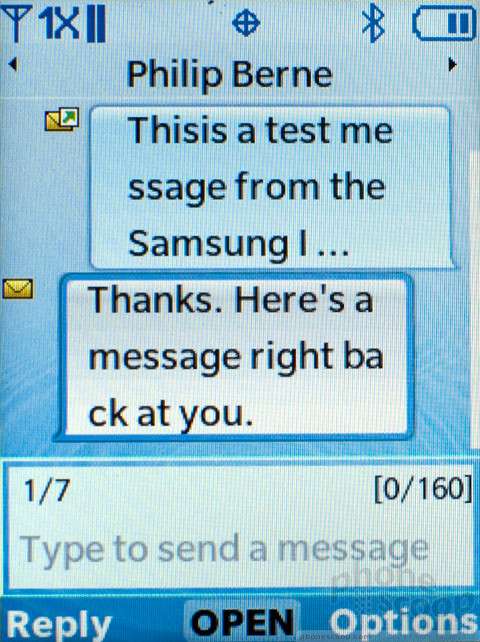


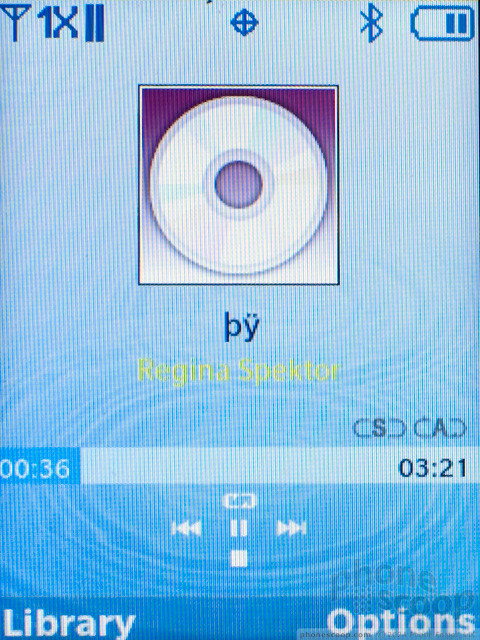



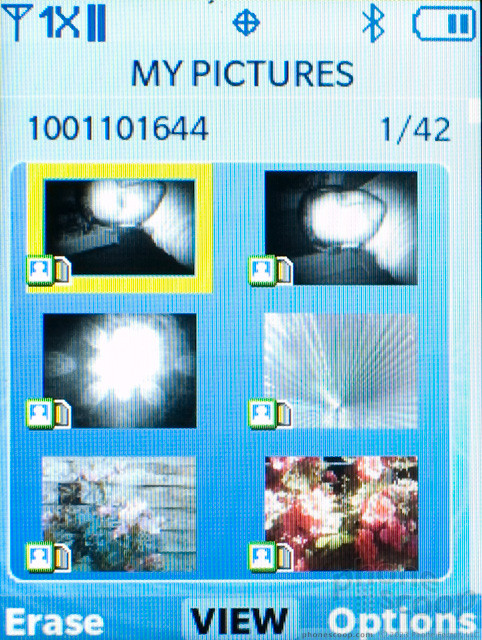












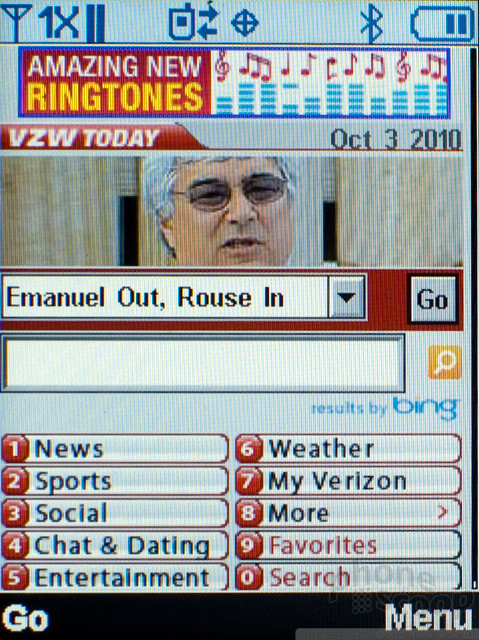



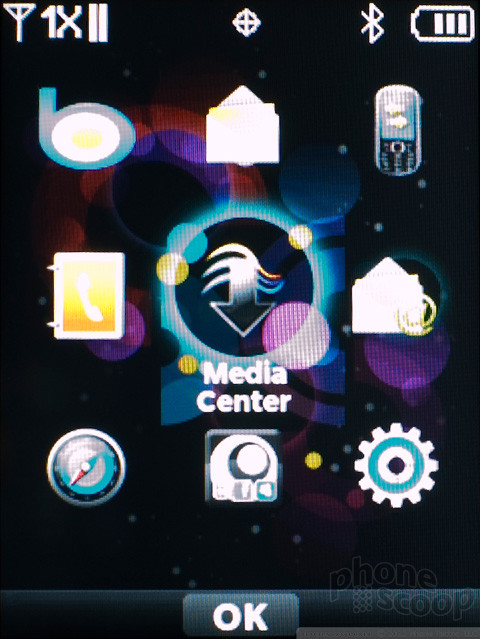


 How To Scan a QR Code with Your iPhone
How To Scan a QR Code with Your iPhone
 How To Scan a QR Code with Your Android Phone
How To Scan a QR Code with Your Android Phone
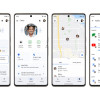 Google Overhauls Android's Parental Controls
Google Overhauls Android's Parental Controls
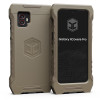 Samsung Brings its Military Phones to First Responders
Samsung Brings its Military Phones to First Responders
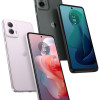 Motorola Brings More Affordable 5G Phones to its 2024 Lineup
Motorola Brings More Affordable 5G Phones to its 2024 Lineup
 Samsung Intensity II
Samsung Intensity II



